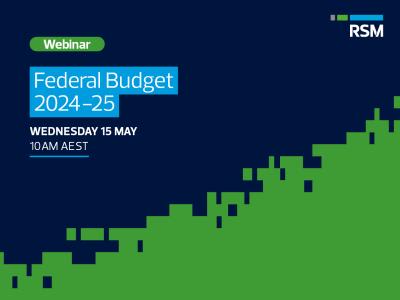Key takeaways
AUTHOR
Today’s figures from the Australian Bureau of Statistics (ABS) reveal a 1.0% increase in the Consumer Price Index (CPI) for the March 2024 quarter, signaling a 3.6% annual rise.
Meanwhile, trimmed mean inflation, designed to eliminate price movement volatility also grew at 1.0% sequentially and 4.0% on a yearly basis
Inflation may have more than halved from its peak in December 2022, however it remains much higher than the Reserve Bank of Australia's (RBA) desired target range of 2%-3%. Add to the mix a rather resilient labour market as evidenced in the data earlier this month, the likelihood of a much-anticipated rate cut gets pushed to the tail end of 2024.
Exhibit 1: Inflation continues to trend down with some quarterly price adjustments pushing sequential growth up
Monetary Policy Implications
Concerns among policymakers about persistent inflation are well-founded. Today's inflation figures exceed the RBA's preferred levels, even if we overlook the annual price adjustments in education and health sectors. Recent developments in the US emphasise the need for caution in the late stages of combating inflation, especially in Australia where significant rebates are keeping actual prices muted.
Consequently, while our base case is for the RBA to pivot in 3Q24, we acknowledge the increasing risk of that being pushed into 4Q24. We do not expect any change in the policy rate at the next meeting and in fact think the new set of forecasts in the updated Statement on Monetary Policy (SMP) in May will reflect increasing concerns of a delayed return of inflation to target levels.
We base our assumptions on the following developments - firstly, there's a risk of upward pressure on tradable inflation, especially for fuel prices due to geopolitical tensions. The Feb-24 SMP had factored in oil prices at $80/barrel which is significantly below current levels. Secondly, domestically driven inflation might be pushed higher by a Federal Budget aimed at alleviating cost-of-living pressures. The impending tax cuts from July will, additionally, increase disposable income for most Australian households.
Consider all of this together and we have a central bank unwilling to budge from its position. The Reserve Bank of Australia's nimble strategy (not rule anything in or out and no forward guidance) is emerging as both transparent and impactful, allowing the bank to carefully monitor incoming data and act accordingly.
Exhibit 2: Impending risks for both tradable and non-tradables inflation
1Q24 CPI Movers and Shakers
CPI weights reflect the relative amount spent on goods and services as a proportion of total expenditure by all households. The annual weight revisions to CPI basket has been broadly minimal. Notably, the 2024 updated CPI weights show a shift back towards pre-pandemic spending patterns, with goods at 54.5% (from 58%) and services at 45.5% (from 42%).
In March, on a quarterly basis, prices surged in Education (5.9%) due to annual CPI indexation, with tertiary and secondary education rising by 6.5% and 6.1% respectively. Health costs increased by 2.3%, reflecting adjustments in consultation fees and fewer people qualifying for subsidised services. Housing saw a 2.1% rise in rents, the fastest in 15 years, and a 1.1% increase in new dwelling construction prices, slightly down from last quarter's 1.5%. Food and non-alcoholic beverage prices went up, driven by non-alcoholic beverages (3.4%) and fruit and vegetables (2.5%), while meat and seafood prices fell by 0.7% due to increased supply and discounting.
Annually, inflation for goods this quarter was 3.1%, marking the sixth consecutive quarter of declining annual inflation from its peak of 9.6% in the September 2022 quarter led by items like footwear, furniture, appliances, and meat and seafood experiencing deflation, meaning prices are lower than a year ago. Services inflation meanwhile moderated to 4.3%, down from its peak of 6.3% in the June 2023 quarter.
FOR MORE INFORMATION
If you would like to learn more about the topics discussed in this article, please contact Devika Shivadekar.
Devika Shivadekar

Devika Shivadekar, our seasoned economist, boasts extensive expertise in macro-economic and financial research across APAC. With over 8 years of experience, including roles at the Reserve Bank of India and a top investment bank, she now excels at RSM, aiding middle-market clients in making informed business decisions.
Her passion lies in simplifying economic data for clients' comprehension. Devika closely monitors macroeconomic indicators, such as growth and inflation, to gauge economic health. Get in touch with Devika >





